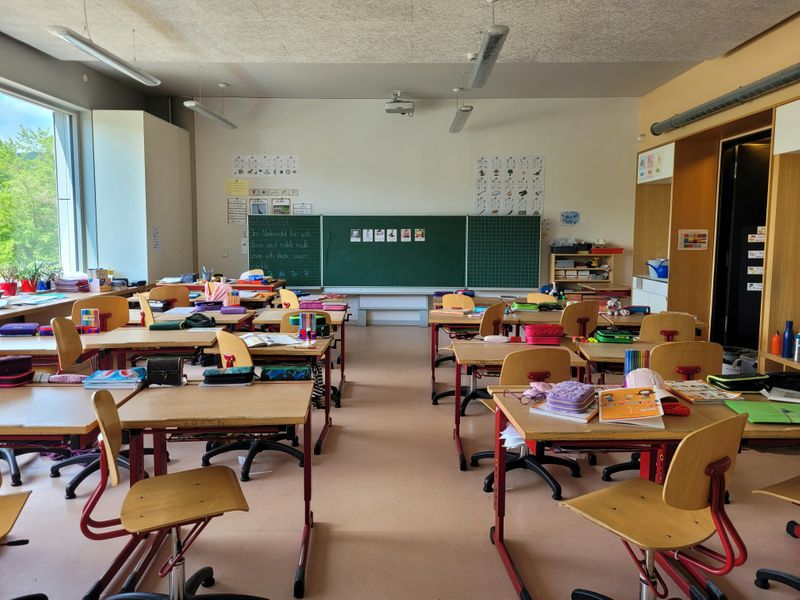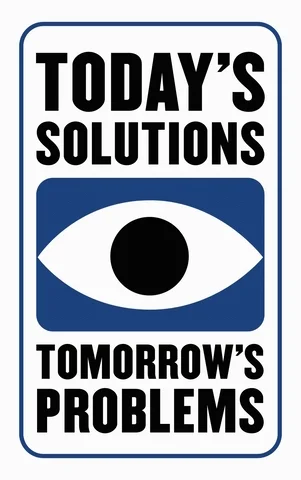 Photo by Jennifer Kalenberg on Unsplash
Photo by Jennifer Kalenberg on UnsplashCongratulations on your new teaching role!
You're about to discover the one thing your training didn't fully prepare you for: your first year.
I've been in your shoes. As a former teacher who made the jump from early childhood to elementary, I know that first-year feeling of excitement mixed in with pure panic.

My goal is to give you a practical survival kit. Think of it as your roadmap to not only survive your first year but to build a solid foundation to thrive.
Before the First Day: Laying the Foundation
Before you even step on campus, there are a few things you can do to prepare yourself for your induction day. Think of these as the “putting on your oxygen mask first” prep.

Read your contract & policies.
Official work hours: What time am Irequired to be at school, and when am I allowed to leave?
Pay schedule: When do I get paid, and where can I find my pay stubs?
Sick day/Leave policy: Who do I contact when I’m sick? Can I take personal leave? How many days do I have?
Student safety policies: What if a student brings in medication? What are the procedures for handling injuries or emergencies?
Union representative: Who is my union rep, and what is their contact information?
 Photo by Anton Rybakov on Unsplash
Photo by Anton Rybakov on UnsplashTest run your commute and get your gear.
Yes, we all carry GPSs in our phones, but testing your route is about making sure you know the way, the turns that aren't obvious, and avoiding surprise construction.
Get yourself an insulated lunchbox (for when there's no fridge) and a spill-proof water bottle/tumbler (accidents happen). You will need to eat and drink within a limited time.
 Photo by Volodymyr Hryshchenko on Unsplash
Photo by Volodymyr Hryshchenko on UnsplashLearn the comms.
Find out how to communicate with parents and teachers. Is there a team-wide group text? Is email, MS Teams, or the phone better for fast communication? Get familiar with them before the first day.
Let’s Get You Set Up in the Classroom

Get to know your students — and don't forget safety first!
Review your class list for any student with an Individual Learning Plan (ILP, or it could have another name) or health alerts (like a severe allergy).

Plan the first weeks to get you and students settled in.
What are the rules/expectations?
What are the "get to know you" activities?
Can I do a transition unit?
When do assessments start?

Plan your classroom flow, not decor.
Forget the Pinterest-perfect room. Focus on function:
Where do backpacks and water bottles go?
How do kids turn in papers?
Where should the stationery go?

Send a welcome email to families.
Remind them of what to bring to school for the first day.
Include an optional activity they can do at home.
Do ✅
Review your student list. Get the necessary documents ready and keep them in a safe place.
Plan activities to get to know each other. Integrate Social Emotional Learning activities in a PBL (Project-Based Learning) where students can collaborate.
Send a short message to welcome families. Use your school's communication protocol if available.
Don't ❌
Post confidential information on your classroom walls.
Jump into academics within the first week if your school allows for it.
Fill the walls with decorations. Use student work and art.
Send individual emails. Bcc: families instead. These email etiquette tips will help you out.
Quiz
It's the end of your first day. You have 30 minutes before you have to leave for the day. What's the most valuable use of your time?
The First Week: Building Your Network

This week is all about making human connections.
Your Students
Your lesson plans for this week should help you get to know them and give them classroom tools:
Create activities where they can interact with you and their classmate and share their interests.
Don't assume they know anything.Explicitly teach, model, and practice everything: how to line up, how to ask a question, how to use the bathroom.
 Photo by Kristina Paparo on Unsplash
Photo by Kristina Paparo on UnsplashParents & Guardians
Make a positive first contact and be visible:
If school policy allows, be present at pickup time. A simple smile and wave builds immediate trust.
Share a positive snippet. A quick, "Ayaan had such a lovely first day!" shows goodwill and opens the door for future communication.
 Photo by Brooke Cagle on Unsplash
Photo by Brooke Cagle on UnsplashThe Teaching Staff
This is your support system for lesson planning, parent questions, staying sane, and providing comedic relief when you need it most.
Start the process with this simple roadmap of who to connect with:
 First-year Teachers
First-year Teachers
Your easiest first connection is with other new teachers you met during induction. You're in the same boat. Lean on each other!
 Leaders
Leaders
For your Year Level Leader or Department Head, be direct and respectful of their time.
Say: "Hi, I'm [Your Name], the new 2nd-grade teacher. I know you're incredibly busy, but I'd love to find 10 minutes the next couple of weeks to introduce myself properly."
 Photo by Christina @ wocintechchat.com on Unsplash
Photo by Christina @ wocintechchat.com on UnsplashNon-Academic Staff
The tech will fail at some point, your students will fall ill almost daily, and a spill will happen in your classroom.
Introduce yourself and learn their names. They're also known as your "School Savers"!

office staff
IT specialists
cafeteria staff
school nurse
custodial team
The First Month: Finding Your Rhythm

This is the make-or-break month for building sustainable habits and avoiding common pitfalls.
Smart Habits to Build 🧠
 Observe & document.
Observe & document.
If your school has a platform to record student behaviour, incidents/accidents, use it. If not, start an offline document or use these other methods.
This will give you and help you:
spot patterns
data for meaningful interventions
evidence to bring to parents or leadership
 2. Always watch videos all the way through before showing them. The last thing you want is to show off-topic or inappropriate content in class.
2. Always watch videos all the way through before showing them. The last thing you want is to show off-topic or inappropriate content in class.
Embed them in slides (Google Slides, PowerPoint, etc.). This avoids ads and awkward suggested videos from popping up.
Common Mistakes to Avoid 😖
 1. Letting up on routines.
1. Letting up on routines.
The kids are settled. Now is the time to refine your routines. Be 100% consistent.It shows you are fair and thinking of their safety. If you let a consequence slide once, students will notice.
If an expectation or routine is not working, brainstorm new ideas withstudents. Have them help design a new classroom job or a procedure for lining up for recess. This gives them a sense of ownership and belonging.
 2. Drowning in paperwork.
2. Drowning in paperwork.
You must create a system that works for you, or the paper will pile up:
Create clear central drop-offs where students can turn in homework, in-class work, etc. This stops the "Did I get your paper?" chaos.
Keep digital versions. If you lose the paper version or need to edit, this will save you time.
Find solutions for your workspaceand make use of other organizational solutions to keep your classroom running.
 3. Lesson plan burnout.
3. Lesson plan burnout.
Yes, teaching involves a lot of planning, but don’t let it consume you.
Don't re-invent the wheel every time. Use your school's existing database or resources from previous years. You can always tweak them to fit your style.
Plan with your team. Use year-level meetings or a shared break to plan with a buddy. Even 20 minutes of sharing ideas can take the pressure off and confirm you're on the right track.
 4. Trying to do it all alone.
4. Trying to do it all alone.
You will feel overwhelmed. You will have a lesson that bombs. You will have a tough day. Don't hide it.
Go to that mentor or teaching buddy you found in the first week. Be honest. Say, "My math lesson was a disaster. What are you doing for this unit?"
Asking for help is a sign of a growth mindset.
The First Year & Beyond: Handling Your First Observation

Formal observations are inevitable, but they aren't a "gotcha." You and your observer are on the same team: helping students.
Before your observation: 📝
If you know when it's happening, give your students a simple heads-up. No need to rehearse, but a warning reassures them and prevents disruptions.
During your observation: 🎬
If a lesson is bombing, it's okay to pivot! Pause to ask students if they understand, or lean into a great 'side quest' (a good student question). This shows you're flexible and responsive.
Right after your observation: 🧘
Take a deep breath! It might be a while before you have your feedback meeting, so take some time to write quick notes to help you remember your observation.
 After your observation (the feedback meeting): 💬
After your observation (the feedback meeting): 💬
Receive feedback with curiosity, not defensiveness:
Ask questions to understand their perspective.
Turn criticism into action. If the feedback is tough, use it.
Ask if you could observe an experienced teacher.
You can even ask for an unofficial follow-up observation to see if you’ve improved and get a second pair of eyes on your lessons.
Think of these meetings as a collaboration, not a judgment.
The First Year & Beyond: Navigating Difficult Parent Conversations
You shouldn't — and don't — have to handle any conversation, especially with confrontational parents, by yourself. You have a team of experienced individuals at your fingertips.
 It can feel like you have to come up with a solution right away when a parent confronts you. Try to resist throwing solutions at them without fully knowing if it's within your and your team's capacity.
It can feel like you have to come up with a solution right away when a parent confronts you. Try to resist throwing solutions at them without fully knowing if it's within your and your team's capacity.
The Listen and Pause Strategy
Say: "Thank you for bringing this to me. I hear your concerns. Let me consult with my team, and I will get back to you by [give a clear, reasonable timeline, like 'tomorrow afternoon']."
If a parent is upset and you're caught off guard, your first job is just to listen. When they're finished, buy yourself time.
Know When to Escalate
Say: "I want to make sure your concerns are fully addressed. Let's set up a meeting with our principal to solve this together.
Your principals and leadership team are there to help you navigate and take the lead when needed. If a conversation isn't productive, it's 100% appropriate to hit pause.

Take Action

The first year is a marathon, not a sprint.
It's not about having the perfect lessons or classroom. It's about solid preparation, building a loving community, and growing. You've got this!
Start the school year on the right foot:
Your feedback matters to us.
This Byte helped me better understand the topic.



